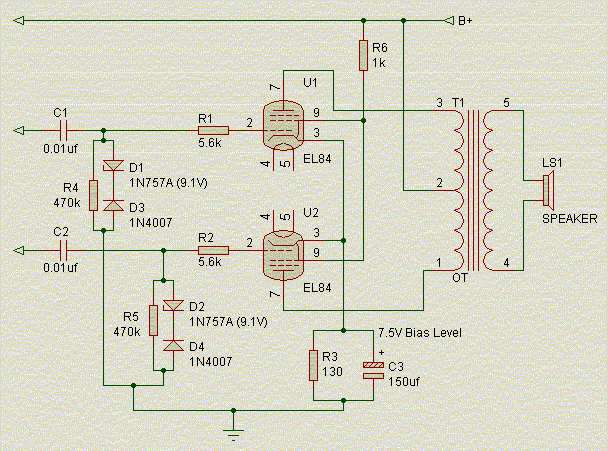Bieworm wrote: ↑Tue 01/05/21 12:38 pm
Ok that's not the problem apparently. Nor 24, 18 or 15V changes anything. I can see my DVM read the values and they stay proper un the zener range.. no change in fizz.
Should I put the 24V 5W zener in anyway for the max bias?
It was worth a shot, but I'm not surprised. You can leave the 24V 5W Zener in if you want, but I don't know that it will do anything for you.
I think the PR mod or the snubber would more likely be helpful.
What are all your voltages now? Can you find documentation with target voltages?
Another possible cause of this is if your signal is too hot going from one stage to the next. Or if you have too much low end getting amplified in the signal path.
I just looked a little more in depth at your schematic. It's not 2 separate channels so much as it looks like switching on the relay cascades V1A into V2B.
If you already have this issue before switching on the higher gain, then you might be able to start trying a couple things earlier in the circuit.
Did you say the circuit has a lot of bottom end? Maybe C9 should be experimented with. Try dropping that to 1µF (or .68, or 2, whatever, something lower).
If that doesn't help, it would be useful to figure out roughly where the issue begins when the high gain switch is off. It's possible you may need to add some voltage dividers on the signal path to reduce the levels.
Target voltages would certainly help a lot. If your preamp is too hot, that could easily cause this issue.
Thanks,
Josh



